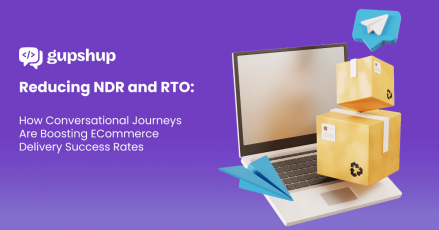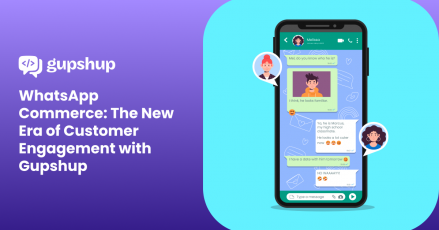Why Your Business Needs a Robust CDP?

Companies continuously search for methods and resources to consolidate and leverage customer data for improved performance in the ever-evolving digital space. The Customer Data Platform (CDP) is one such game-changer that has been gaining traction.
The CDP, which serves as a single source of customer data, goes beyond temporary changes. Instead, it serves as a powerful and long-lasting solution for businesses wishing to reinvent their advertising and customer experience (CX) strategies. The growing importance of client data is not a passing trend; it signifies an essential change in how organizations interact with their customers.
Let’s explore why incorporating a strong CDP into your marketing stack is robust and essential.
Understanding CDPs
So, what is a CDP exactly, and why is the marketing community talking about it so much?
A customer data platform is the control center for all your customer information. To provide a comprehensive picture of your customers, a CDP acts as a central hub that collects, arranges, and activates customer data from several sources. Not only does this strengthen your personalized marketing campaign, but it also sets the stage for a wonderful client experience.
A CDP’s primary goal is to give marketers a 360-degree perspective of their customer base. A CDP aggregates data, providing insights into customer habits, preferences, and interactions across multiple channels, as opposed to fragmented, isolated data spread across different platforms. This cohesive customer profile establishes the foundation of customized and focused marketing campaigns.
CX in Marketing: How CDPs Help
Gone are the days of random cold calls and bombarding customers with promotional messages that inevitably get tossed in the spam folder. Customers today expect personalized experiences, and providing a valuable experience is more important than ever.
Customer experience (CX) is the magic ingredient that turns transactions into connections. It involves understanding your customers on a deeper level and building interactions that speak to them personally.
Here’s why having a robust CDP for CX is useful — it is the cornerstone of your CX strategy, giving you the knowledge and resources you need to build smooth and customized customer experiences. A CDP is the foundation of a customer-centric strategy, whether used to customize marketing campaigns, forecast demands, or improve the end-to-end customer journey.
Why Does Your Brand Need a CDP?

To thrive in a hyper-personalized digital space, businesses need access to segmented data pools to better understand and address customer needs, pain points, and expectations. From food delivery apps coming up with personalized recommendations to retail brands sending hyper-personalized product offers on WhatsApp, all customer-focused interactions rely on customer data.
Here’s where CDPs come in to address the data-related needs.
360-Degree View of the Customer
Businesses can thoroughly understand their customers with the help of a CDP. Combining data from several touchpoints gives marketers a comprehensive view of the client journey. This comprehensive approach enables companies to tailor interactions, make well-informed decisions, and develop more focused marketing campaigns.
Tailored Marketing Initiatives
Bid farewell to generic, one-size-fits-all campaigns. Your marketing team can develop highly targeted, tailored campaigns that connect with specific customers based on insights from a CDP. It’s similar to creating a marketing plan that specifically addresses the requirements and preferences of every single client. This customization boosts conversion rates and engagement.
Enhanced Customer Retention
The secret to long-term business success is establishing enduring relationships with your customers. With a CDP, you can anticipate lost clients, find and cultivate high-value clients, and foresee their demands. By understanding consumer habits and preferences, companies can adjust their services to match individual expectations, resulting in greater customer retention and a loyal customer base.
Data-Informed Decision-Making
Customer data offers invaluable information in this data-driven decision-making era. In addition to collecting data, a CDP offers analytical tools. This enables companies to adjust their strategies in response to market trends by making well-informed decisions based on real-time data.
Enhanced Marketing Attribution
In the intricate web of omnichannel marketing campaigns, attributing the success of each touchpoint can be like solving a complex puzzle. A robust CDP simplifies this process by providing clear insights into the customer journey. It enables businesses to understand which interactions and channels contribute most significantly to conversions, allowing for more accurate marketing attribution.
Steps to Integrate a CDP
Now that the benefits are clear, how do you go about integrating a CDP into your marketing stack? Here are the steps to guide you through the process:
-
Clarify Your Goals
Before trying CDP for business, ensure your marketing and CX goals are in order. Whether improving conversion rates, elevating customer engagement, or improving personalization, a well-defined plan is crucial, regardless of the goal. Specify the objectives you want to accomplish by integrating a CDP.
-
Analyze Your Data Sources
List all channels and touchpoints where your customer data is stored. A robust CDP guarantees a consistent and accurate consumer profile by easily integrating data from multiple sources. Recognize the data environment in your company, including sources like social media, CRM systems, website interactions, and more.
-
Select the Right CDP
Every CDP is not made equally. Assess your company’s demands, budgets, and scalability requirements to select a CDP solution that meets your objectives. Consider the elements of flexibility, ease of integration, and the capacity to manage the quantity and diversity of your data sources.
-
Ensure Data Compliance
Data security must be prioritized since privacy concerns are at an all-time high. Select a CDP that guarantees the ethical use of customer data and complies with data protection laws. Transparency in customer data acquisition and management fosters trust and supports your dedication to data privacy.
-
Instruction and Acceptance
There is a learning curve in implementing a CDP. Ensure your team receives enough training and accepts the new tool. A successfully implemented CDP is a valuable resource for your company. Take the time to instruct your staff on the features of the CDP, recommended procedures, and how to incorporate them into their regular workflows.
Conclusion
Investing in a robust CDP isn’t just a business move; it’s a strategic shift towards prioritizing customer experience in marketing endeavors. The benefits — from a 360-degree customer view to personalized campaigns and improved customer retention — are too substantial to ignore.
As you embark on this journey, remember that the right CDP isn’t just a tool; it’s a catalyst for transformative customer experiences and business success. Elevate your marketing game, prioritize CX in marketing, and consider integrating a CDP for CX. Your customers will thank you, and your business will reap the rewards of a customer-centric approach.




